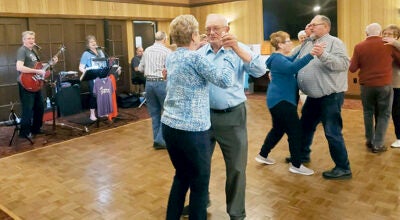Don’t ask, don’t tell a non issue
Published 6:48 am Monday, February 8, 2010
Both Secretary of Defense Robert Gates and Joint Chiefs Chairman Adm Mike Mullen last week set in motion the likely “end” of the 16-year-old “don’t ask, don’t tell” law on gays in the armed forces. The time has come. “Don’t ask, don’t tell” should be not so much repealed as revised or, more to the point, re-envisioned. We, on all sides, need to get over obsession with the letter of the law and focus on its spirit.
The law, both as executed and opposed, has failed to accomplish its purpose, and this, too, is consequent to obsession with its letter or legal mechanics. The fact of the matter is that the armed forces have always operated under an informal “don’t ask, don’t tell” policy, and it was making it a formal law that, if not caused then at least, occasioned the trouble and conflicts.
I suggest we not make an issue of repealing the law, but that we adjust our perspective to consider sexual orientation of armed forces personnel to be a non-issue.
Mullen told the Senate Armed Services Committee: “I have served with homosexuals since 1968.” He added, “Everybody in the military has, and we understand that.” For my part, I met the first homosexual sailor 21 years before the admiral did, and continued to serve with them for 43 years. Whether he recognized what he was saying, it is that the armed forces got along, if not well then at least, adequately before the issue was codified into federal law.
Officers through those years did not routinely ask, “Soldier, are you a ‘homo’ (or any number of available alternate terms)?” An airman didn’t go around bragging, “I’m here, I’m queer; get used to it!” The one did not interrogate; the other did not propagate. This was don’t ask, don’t tell.
For some years, the principal worry about homosexuals was as security risks. In my days as a counterintelligence agent, we were instructed routinely to report anyone our investigations found to be homosexual or even perceived to be. The reasoning, dating back to WWI, was these were excessively vulnerable to exploitation by threats of exposure. If this reasoning were ever valid, we have long since past it. Such bias, and it was this, wasn’t general because a very small percentage of personnel needed high level security clearance.
The only real trouble was when a gay individual broadcast his sexual preferences or, more seriously, acted out. In every case drawn to my attention and in every case where I was consulted, the soldier had displayed and/or demonstrated homosexuality openly. As one First Sergeant put it to me: “He put on a little demonstration for the boys.” These were disciplined as disorderly conduct. But precisely the same action was taken against heterosexuals who engaged in sex openly—and for the same reason of disorderly conduct that was a serious disruption to military life.
There was a time when the presence of an openly gay man within a unit seriously disrupted unit harmony and teamwork. Part of the conflict was, of course, that the man was openly gay and, thus, made others feel uncomfortable and even distrustful. At least as much at cause was the self-consciousness and even insecurity of the others.
But in American society, we have learned how to live and work with gays and lesbians. We have even learned to like some, if not because of then in spite of their sexual orientation. The armed forces of the United States dare not be disproportionately different from general American society and still actually represent our nation.
The key in all this is not sexual preference or orientation, but behavior. If a military man or woman behaves with social propriety and performs with military professionalism, there is no need either to ask or tell.
Being homosexual or gay ought not bar anyone from serving our country in its armed forces.
No gay person ought to behave or perform in such a way as to disqualify self from serving.



